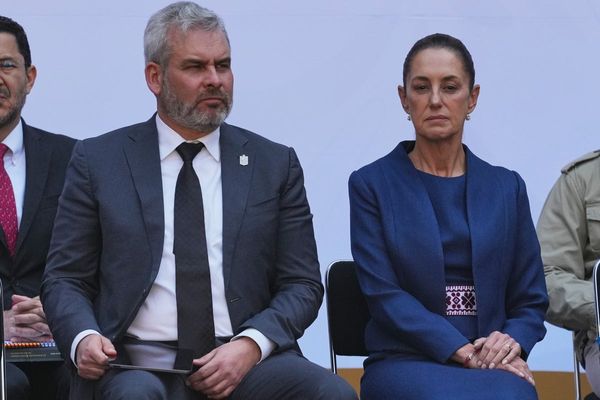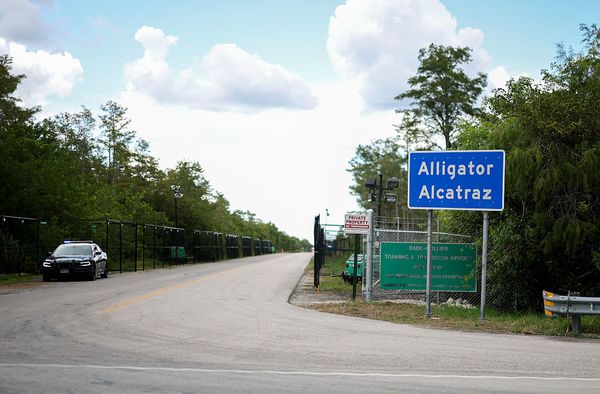
A multibillion-dollar Japanese plan to extract hydrogen from Victoria’s brown coal is at risk of failing due to demands for extra subsidies and a lack of willingness from Japanese customers to sign up for long-term deals.
People familiar with the Hydrogen Energy Supply Chain (HESC) project said only a portion of the ¥220bn (A$2.48bn) funding would actually be spent on developing a liquefaction plant in the Latrobe valley and export facilities at the nearby Hastings port.
The issue of responsibility for capturing and containing the project’s carbon emissions is also unresolved, with the state government potentially liable.
“The money now put on the table by the commercial proponents explicitly won’t go to capturing the project’s carbon or storing it,” Lily D’Ambrosio, Victoria’s climate action and energy minister, said. “100% of that risk … sits with Victorians.”
The $500m, decade-long project has claimed several technological breakthroughs, including last year’s first shipment of liquefied hydrogen to Japan. Proponents have argued that using fossil fuels to create hydrogen and sequestering the emissions – so-called blue hydrogen – could lower the price and boost demand, paving the way for a later switch to renewables to create green hydrogen versions of the nascent fuel.
Opponents, though, say the cost of capturing and storing the resulting carbon emissions will likely render fossil fuel-sourced hydrogen uncompetitive.
Short-term contracts, long-term problems
Guardian Australia understands the federal and state governments have been asked for “multiples” of the $50m both have so far invested in a project that is not expected to reach commercial scale before 2030.
Worse, the Japanese partners are offering contracts to take hydrogen produced in the Latrobe valley for fewer than five years. The project owners would then have to sign up alternative customers at a time when green hydrogen supplies should already be available.

Guardian Australia approached Tim Pallas, Victoria’s treasurer and the government’s most outspoken backer of the Latrobe project, for comment. “We will work with Japan and the commonwealth to further assess the commercial, technical and environmental feasibility of the project,” a government spokesperson said.
A spokesperson for the federal climate and energy minister, Chris Bowen, said the Albanese government welcomed “that Japan looks to Australia to enhance efforts to build the global hydrogen industry”, but said Bowen had not received a request to support the next stage of the project and did not comment on the length of the proposed offtake contracts.
Jeremy Stone, the non-executive director of one of the Japanese partners, J-Power Latrobe Valley, said the consortium was “grateful for the ongoing support of the Australian and Victorian governments”, but declined to comment on the request for more funding.
“The length of offtake agreements will be confirmed once we have finalised our current round of feasibility studies,” Stone said.
Japan Suiso Energy, the organisation responsible for clean hydrogen liquefaction, storage and loading in Victoria, is yet to determine how the ¥220bn grant from the Japanese government “will be split between these elements”, he said.
The Australian Hydrogen Council, an industry group, said the HESC project would not require renewable energy resources that were needed for other parts of the state’s decarbonisation efforts, labelling it an “alternative pathway” to the “main game” of renewable hydrogen.
“We can utilise it so long as there’s a sequestration solution,” said Katerina Aleksoska, the international general manager at the AHC. “If [the Guardian’s] information is correct [and] only short-term contracts are being offered, it will make the project more challenging.”
Analysts such as Llewelyn Hughes, a Japan specialist at the ANU’s Crawford school, say a short-term contract contrasts with the long-term deals the LNG industry has signed with Asian customers. Santos’s GLNG venture in Queensland, for instance, underwrote its main operations with a 20-year contract with South Korea’s Kogas. China and Japan have a range of 25-year contracts.
“We really don’t know what role hydrogen is going to play ultimately in Japan’s decarbonisation efforts,” Hughes said. “There’s a real risk of some winding back.”
Andrew “Twiggy” Forrest, who is pouring billions of dollars into developing green hydrogen, said the Japanese investment in Latrobe was “better than nothing” but “I simply wouldn’t do it”.

“Carbon capture and sequestration, statistically, has been a massive, abject failure. It literally waits for the next sucker to come along,” he said.
Depending on the size of the residual emissions from the project – since not all of them can be capture and sequestered – the venture might also attract costs under the new safeguard mechanism passed by the Albanese government.
“The Department of Climate Change, Energy, the Environment and Water is developing an international best practice emissions intensity value for new hydrogen production under the safeguard mechanism,” Bowen’s spokesperson said, adding that new hydrogen producers – if covered by the mechanism – would have to meet baselines or purchase offsets or credits to make up the difference.
Victoria’s D’Ambrosio said “it’s a no-regrets investment for the commercial proponents, but we get the added emissions”.
“You have to ask: is this a good deal for Victorians?”







